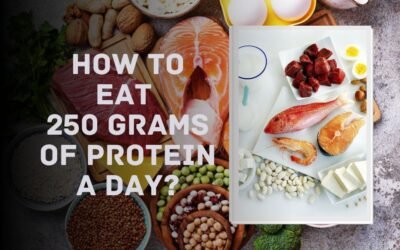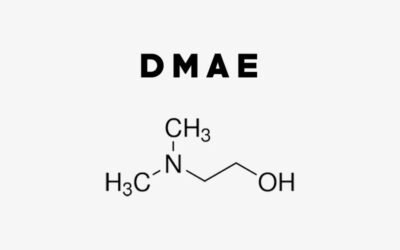
Here’s Why Refeed Day Matters & Helps to Keep You Focused on Your Goals
Making a healthy lifestyle your next nature is easier said than done, especially if you’re trying to lose weight.
Usually, weight loss diets focus on consuming a small portion and lesser calories. It’s not new to say that many people struggle to stay true to it, and many even start getting frustrated if they don’t see the immediate results and start binging into food that should’ve been kept away. For instance, if you’re someone who’s trying to get shredded, you know what food cravings are all about. The good news is that refeeds help kill those unwanted cravings.
Before we dive into details of refeed days like what is it, or how often to do refeed days, let’s understand whether having food cravings is normal.
Is It Normal to Experience Food Cravings?
How much you experience food cravings depends upon your dieting. If you’re on an aggressive diet plan and your body fat is lower, then you’ll experience these food cravings. In other words, your body looks for survival, so whenever it’s not receiving its needed nutrients, it’ll do whatever it can, including giving your food cravings to resolve this survival problem. On the other hand, your body reacts to strict dieting by increasing the leptin in your body. Leptin is one of the hormones produced by fat cells that helps your body monitor already stored and new calories. Also, leptin signals your body to consume more food. And, this signaling helps to increase your appetite while boosting your metabolic rate.
Here’s How to Stop Those Unwanted Food Cravings
Put simply, eat food. Yes, get some of your favorite food you’d like to eat. It’ll help you stop those cravings – though it should be eaten once in a while and in a limited amount. It’ll help your body to minimize the release of leptin. In other words, eating your favorite food means indulging refeed days to limit the release of leptin levels, so you don’t feel cravings for that food that holds you back from your goals.
So, if you’re questioning what is a refeed day or now what’s this refeeding day, what to eat on a refeed day, then don’t worry, we’re getting into it in a moment.
What Is a Refeed Day?
A refeed day is when you overfeed yourself by consuming more than required calories with an intention after a prolonged period of staying in a caloric deficit. It can be due to eating fewer calories for fat loss, increased physical activity, or else both.
Though it might sound similar to cheat day, it shouldn’t be confused with that. On cheat days, you’re allowed to eat in an uncontrolled and unplanned manner, including any food in unlimited quantities.
On the other hand, refeed days are done thoughtfully with proper planning, and food intake is also in control. Unlike cheat days, little to moderate caloric increase is allowed, and what type of food you consume matters, as most of the time, refeed days focus on getting calories from carbs instead of protein and fat. Though refeed days can differ from one person to another. But, the overall goal is to eat in a caloric surplus and in a controlled manner.
Here’s How Refeed Day Works
You might be wondering how come temporary caloric surplus can prove beneficial for weight loss. The main reason behind such a temporary surplus in calories is to address issues regarding losing weight. Yes, after sometimes your body hits weight loss plateau, and your weight loss process slows down or else stop altogether.
As the caloric intake decreases and you begin to lose body fat, change occurs in your hormones that signal your body that you’re consuming less than required calories. During this time, your body starts looking for ways to reduce this caloric deficit, and in that process, it tries to limit weight loss to compensate for that caloric deficit.
Put simply, your hormone called leptin starts declining. (Leptin is a hormone produced by fat cells, and it’s responsible for telling your body that it has an adequate amount of fat stores that helps regulate appetite and encourage calorie burning.)
However, it starts signaling your brain that your body is getting into caloric deprivation if it gets low. As a result, your body starts receiving a signal that it should eat more food and burn fewer calories, and this process is known as adaptive thermogenesis.
What Is Adaptive Thermogenesis?
Adaptive thermogenesis means the regulated production of heat regarding an environmental change in diet and temperature, which results from the inefficiency of metabolism. In other words, it’s a protective process of your body’s metabolism where it increases energy intake and decreases energy output, which slows your weight loss process. Further, it also affects the rate your body burns calories.
Here’s What Refeed Days Do
Whenever you consume carbohydrates, they further get broken into glucose or blood sugar. And, your body makes use of this glucose as the primary resource as a fuel. These Glycogen are stored in muscles and liver, and it’s kept as a backup fuel source for your body.
Looking towards hard exercise does do well to you. But it also breaks you down. If you’re in a caloric deficit to lose weight or follow a strict diet to get ripped, it can become tough on your body. The stored Glycogen gets depleted, and eventually, your body gets into a stress state that wears you down mentally, too.
Physically, by taking more rest, you can overcome this issue. But, from a diet point of view, it gets difficult. No doubt, by eating more it can be solved, but if you’re looking to lose weight, then you’ve to get a bit careful as there are higher chances of you getting back to the same mess from which you want to come out, which means you can start gaining weight again if you don’t take care of your diet. And, to address this issue, refeed days come in.
As mentioned above, refeed day means you’re allowed to eat a little more but in a controlled manner, and the food you intake should be through carbohydrates that are high in GI (Glycaemic Index) rating.
The main reason behind doing so is that your body gets into carbohydrate deficiency after a certain period if you’re following a low-calorie diet. In other words, the primary fuel source of your body glycogen gets low. And, to balance this issue, refeed day is the answer. So, in such scenarios, a sudden spike in carbohydrates helps to push harder during exercise without lowering your required Glycogen.
Further, it also gives some enjoyment to your taste buds, as you can eat yummy food without feeling guilty about it. High-carbohydrate foods also release a hormone called serotonin in your brain, also called the “feel good” hormone.
Here Are the Benefits of Refeed Day
Whether you’re losing weight or gaining muscle, you’ll get some benefits of a refeed day mentioned below:
Helps in Weight Loss Plateau
If you’re questioning how to break the weight loss plateau, this refeed day is an obvious answer. Yes, it helps prevent unwanted weight loss plateaus that come as a bonus after a long dieting period.
At the beginning of the weight loss diet, many start getting immediate results, but one time comes when it gets halted even if everything is going on at a point called a weight loss plateau. To prevent this issue, refeed day comes in.
By giving extra calories to your body, most of from carbohydrates, your body’s leptin level gets a temporary spike, which helps avoid adaptive thermogenesis that interferes with your weight loss journey.
Help You Curbing Hunger Pangs
If you’ve ever dieted before or else dieting to get shredded or simply trying to lose weight, then you might know how difficult it gets from time to time, how you daydream about your favorite delicious food. Most of the time, you even get into those guilty pleasures which doesn’t do any good. So, to break those patterns of giving in to your craving, carb refeed day comes in. It helps to prevent those hunger pangs that becomes an obstacle between you and your goal.
Can Help Improving Your Exercise Performance
Yes, refeed days help improve your exercise, and a day after refeed day, you may even experience it in your workout that you’re energetic. That sudden spike in carbohydrates gives enough energy to push harder during your workout.
After keeping yourself in caloric restriction for a certain period, your body’s Glycogen storing ability is limited. This Glycogen is a long chain carb that gets stored in your muscles and liver. So, if you correctly give spike, it quickly gets used during your workout.
Here’s Some Possible Disadvantage of Refeed Day
No doubt refeed days have their benefits, but it does have a certain disadvantage too. So, it would help if you address it. Some of the commonly seen are like:
Not Well Researched
In theory, the importance of refeed days makes sense, but that’s also true: there’s not much research on it, and adaptive thermogenesis is also a contested topic for researchers.
On the other hand, the human body is quite adaptive to change and can easily adapt to the food we eat. Also, metabolism doesn’t change abruptly from one day of calorie surplus or deficit. It also depends upon genetics and age.
Lastly, it takes a few weeks of caloric restriction for your body to reach a level where it starts declining leptin hormone and adaptive thermogenesis.
Easier to Overeat
Even if you’ve planned everything for your refeed days, you can still overeat once you start. Also, the intensity of your craving depends upon how restrictive you’ve been towards your diet.
Therefore, it’s recommended to limit yourself to at max 500 caloric deficit per day followed by increased exercise if you’re trying to lose weight. Lastly, such a balanced approach takes longer to lose weight, but you’ll less likely regain again.
Refeed Days Are Part of Diet Mentality
Refeed days encourage a temporary break from usual calorie restriction, but it’s still similar to weight-loss diets.
Many weight-loss diets give good results initially, but a person may regain the weight they lose. Instead, it’s suggested to follow a healthy lifestyle where you’re not encouraged for heavy calorie restriction or eliminate certain food groups. In other words, it’s best to avoid refeed days and to keep calorie restriction minimal while increasing your physical activity.
Refeed Days Affect Relation With Food Negatively
No matter which diet program you follow, it comes with the risk of negatively affecting your relationship with food. Though refeed days let you enjoy high carb foods for one day, they’re usually paired with diets that likely eliminate certain food groups making an unhealthy mentality of good food and bad food.
Besides, refeed days are only for a day every week or two, creating stress and fear of food. For example, this food may not be appropriate to eat. It can ultimately lead to disordered eating thoughts and habits. Lastly, if you’ve any eating disorder, it’s best to avoid refeed days, as it can backfire.
How to Do a Refeed Day
If you’ve made your mind on refeed days, it’s best to plan out a proper eating routine and make sure that you don’t go overboard. Also, you might have to adjust certain rules that should meet your body’s needs. Though there’s a certain disadvantage, people consider including refeed days twice in a month depending upon their body fat percentage and overall goals. For instance, if your body fat percentage is low, you may need to have more refeed days than those with a higher body fat percentage.
You can use the below chart as a guide to decide if you’re having questions like how often to do refeed days:
| Body Fat in Percentage | No. of Days to Incorporate Refeed Days |
| Men who are 10% or higher | 1 time every 2 weeks |
| Women above 20% or more | 1 time every 2 weeks |
| Men who are less than 10% or even lesser | 1 to 2 times in a week |
| Women with body fat percentage around 15 to 20% | 1 to 2 times in a week |
Note: Women need to maintain 15% or above for supporting their overall health and reproductive.
There are no official guidelines, and many aim to increase calories by 20 to 30% on refeed days. For instance, if you’re following a 2000 calorie diet to maintain your weight, you should shoot for an extra 400 to 600 additional calories on refeed day. It’s suggested to get those additional calories from carb-rich foods such as bananas, pasta, and rice, increasing leptin levels.
Furthermore, it’s best to prioritize carbs first instead of protein and keep fats on the lower side. Most of the time on refeed days, fats are limited to around 20 to 40 grams. It’s also suggested to consume 0.68 to 0.9 grams of protein per pound (1.5 to 2.0 grams per KG) of your body weight.
Here’s Why to Limit Fat During Refeed Day
On your refeed day, mostly those extra calories come from carbohydrates. Hence, if you eat fatty food, there’s a higher chance of those calories getting converted into body fat. Lastly, 75 to 85 percent of the calories from excess carbs are stored by an average person, and if it’s from fat, most likely 100% of excess calories will become fat.
Refeed Foods: What to Eat on a Refeed Day
Some of the high carb food that you can try on your refeed days are, Pasta, Cereal, Oats, and Bagels with the right and thoughtful toppings, fat-free ice cream, or frozen yogurt.
How to Know That Now You Need Refeed Day
If you’re following a restrictive diet, then there comes a time that you may see some signs that tell now it’s the right time to incorporate refeed days into your diet, and they’re
- You lack energy during your workouts.
- Your body takes a longer time to recover after exercise.
- You’re doing everything right, following the right diet plan and exercise routine. Still, your body stops shedding weight.
- You crave more food than you usually do.
Wrapping Up
Refeed days are done mainly to get a temporary break from a calorie-restrictive diet. The main purpose of refeed days is to improve the leptin hormone level to prevent weight loss plateaus caused due to adaptive thermogenesis. It also helps decrease your risk of binging into food that you shouldn’t be having and improving your exercise performance. Lastly, it may not be suitable to consider refeed days into your diet regime if you have any eating disorder.








